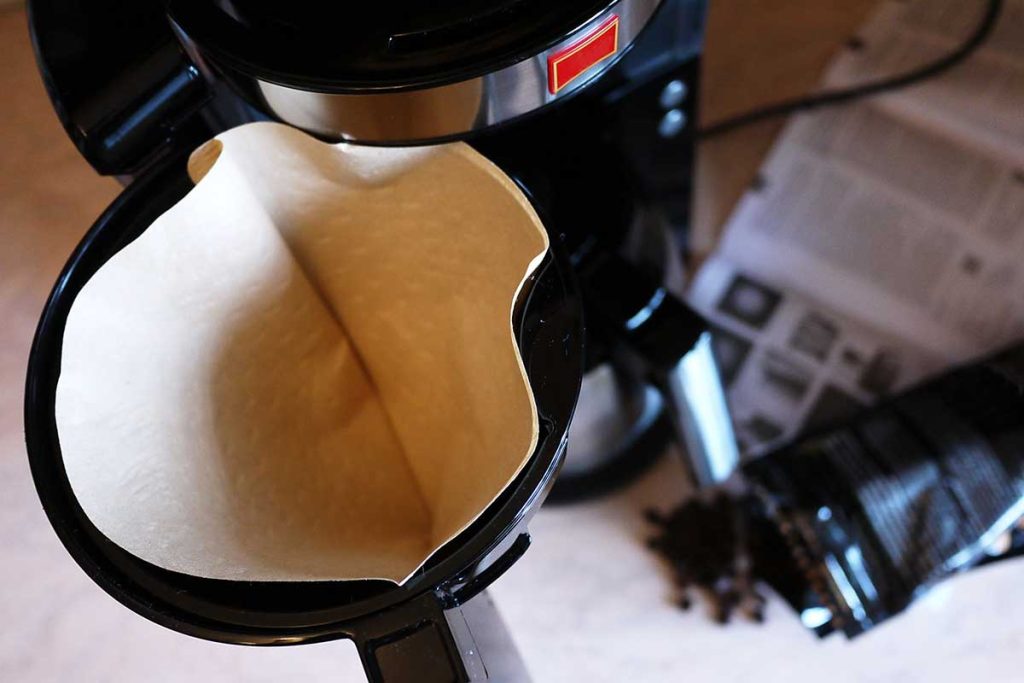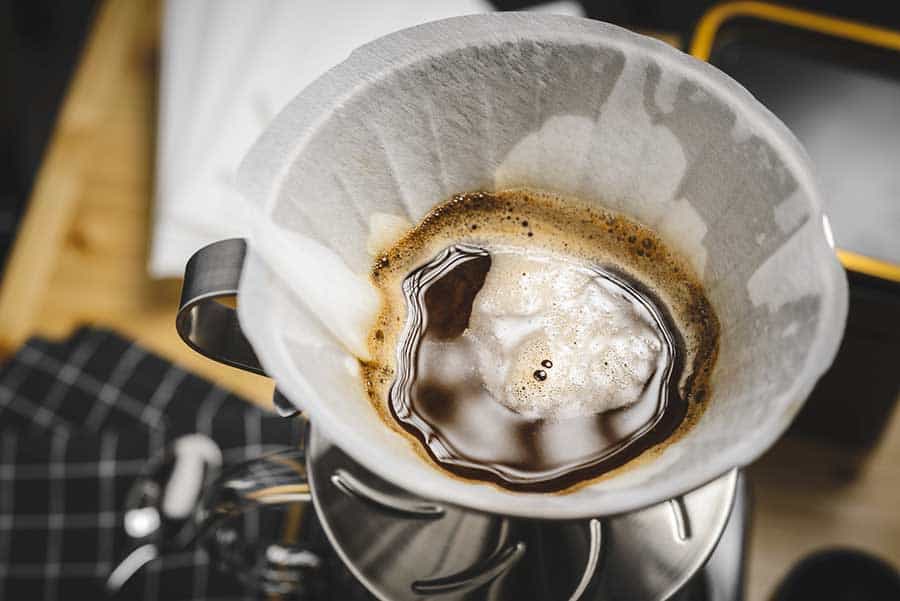How to Use a Drip Coffee Maker (Step-by-Step Guide)

If you know how to use a drip coffee maker, you can brew delicious coffee at home that’s as good or even better than what you’ll get in a cafe — and you don’t have to stand in line for it.
In this article, I’ll talk about everything you will ever want to know about using this coffee maker, from what it is and how to use it, to how it compares to espresso machines. Join me as I walk you through all that and so much more.
What’s a Drip Coffee Maker?
If you’re not new to the coffee world, you have probably heard of, downed, or made a cup of drip coffee. It’s actually one of the simplest coffee beverages to make today, but what makes it?
You guessed right: a drip coffee maker. Both pour overs and drip coffee makers share the same brewing method. Hot water goes through coffee grounds, extracts coffee, then drips into a cup or carafe with the help of gravity. The two units aren’t similar in how they make this happen, though.
Drip coffee makers are more convenient and easy to use, even for newbies. Older models were hands-on and a little bit sophisticated, but most of the machines available on the market today have been automated. Some great options to consider include:
- Breville BDC450BSS Precision Brewer Thermal, Coffee Maker
- Capresso 5-Cup Mini Drip Coffee Maker
- Cuisinart Coffee Maker, 14-Cup Glass Carafe
On your part, there’s very little work involved in making coffee using one of these machines. Fill the water reservoir, load the coffee into the machine, and let the unit work its magic. There’s more to this process, however, and I’ll cover it all below.
It may sound simple but there are a couple of things you need to get right for you to make a tasty, well-balanced cup of joe.
What You Need to Brew Drip Coffee
Let’s start off with what you are going to need for this process:
- Ground coffee
- Grinder
- Water
- Coffee mugs
- Measuring scale
I could get you into the steps right away, but I would have skipped the preparation, which is just as important as the brewing part. Let’s learn a few things first that really matter in the preparation of drip coffee.

Preparing Coffee Beans
You have two options: pre-ground coffee or whole beans that you grind fresh.
Pre-ground coffee is relatively cheap and needs no further processing. It’s made to be put into your machine’s filter straight from the pack. Unfortunately, the flavor profile of your brew will not be as rich and complex as that of coffee made from freshly ground beans. For many coffee lovers, this has been the deciding factor.
Whole coffee beans still have the flavor and aroma locked in, so it’s up to you to unlock them. First, you need a grinder and some basic barista skills. Grind the beans to a medium grind size, or roughly the same texture as smooth sand.
Some coffee shops will grind the beans for you, but the more convenient option is to get a grinder of your own.
Choosing a Grinder
Not all grinders produce the same result. Blade grinders are the cheapest, but their biggest downside is that they won’t make grinds that are consistent or uniform. Some will be coarse, others, fine, and this will lead to coffee that’s unevenly extracted.
Go for a burr grinder instead, but choose carefully since the very cheap ones are just as poor as blade grinders. I would get the Fellow Ode grinder if I were you. It’s one of the few well-priced burr grinders you can count on for impeccable grind quality.
Burr grinders generally grind beans to a uniform particle size no matter what level you want. They will get you the best grind for different brewing methods, including drip brewing.
Fresh Clean Water
What probably comes to mind is purified or distilled water, and both are good options but the absence of minerals will make your coffee flat. Tap water isn’t bad either, but more often it has odd odors and tastes that may ruin your coffee.
Don’t panic, we haven’t exhausted all the options yet. Get a filter that won’t remove all minerals from your water but only those compounds that may ruin your coffee’s flavor. Another equally great alternative is bottled water, especially spring water.
Coffee to Water Ratio
It wouldn’t hurt to learn from the best regarding which ratio to use. Coffee enthusiasts have for years stuck with 1:15-18, otherwise known as the golden ratio.
Basically, start by using one gram for every 15 to 18 grams of water. You may need a measuring scale for that.
If you have to use volume measurements (which we don’t recommend), like tablespoons, that would be 1 to 2 tablespoons of coffee for every 6 ounces of water, according to the National Coffee Association. You can use the calibration settings on your drip coffee maker to get the measurements right.
This is the optimal ratio for not only automatic but also manual drip coffee makers, but it is not cast in stone. If you have a sensitive stomach, for instance, you might want to cut down the amount of coffee in each cup.
Two other factors you can’t afford to ignore are brewing time and temperature.
Brewing Time & Temperature
The sweet spot for brewing great coffee is 195 to 205 degrees Fahrenheit. Automatic drip coffee makers will take care of this for you, but if you are using a manual unit you can use a barista thermometer to measure the temperature.
The same applies to brewing time. Automatic models take between 3 to 5 minutes to make a cup of coffee. But really, brewing time is dependent on your grind. The coarser the grind, the faster the water passes through the grounds. Finer grinds will trap the water longer and extend your brewing time.
Next, let’s look at the steps.
Steps on How to Use a Drip Coffee Maker
Step 1: Fill the Reservoir with Water
Add clean filtered water to the machine’s water reservoir; don’t use anything else, not even flavoring agents or complementing liquids. Some units have lines showing how many cups you can make so you might want to fill it to the desired level.
Step 2: Choose a Filter
You will have to choose between disposable and reusable filters. Each affects your coffee’s flavor differently.
Cloth and paper filters are the best because, in addition to holding the coffee grounds, they seize some of the volatile oils present in coffee, leading to a more flavorful drink. However, you will pay more for them in the long run, compared to metal filters, which are permanent and just as good at capturing subtle flavors.
Step 3: Add the Coffee Grounds
Add the coffee grounds to the filter and place it in the filter basket. In most drip coffee machines, the filter basket sits just below the brew head, precisely where heated water comes out.
Some coffee makers will have the golden ratio already figured out for you; just stick to the limits on the water reservoir and coffee basket. Do not experiment with the process if you lack barista-level skills or a rich brewing experience.
Step 4: Brew
This is where you press or dial brew and the machine does its magic. As I told you earlier, this should take anywhere between 3 and 5 minutes. Your cup of joe will be ready at the end of the brewing cycle.
It would be best to drink your drip coffee within hours, especially if it is in a pot or glass carafe. If left to sit for more hours, the oils will ruin the flavor. There’s a quick solution to this, though; store the brewed coffee in a thermal carafe
Step 5: Clean Your Brewer
Rinse the filter (if you have the reusable type) and then clean the water reservoir, carafe and pipes after you are done brewing to remove calcium deposits and other residues that are known to a coffee maker’s performance after some time.
These five steps pretty much sum up how to use a drip coffee maker. But I have some bonus tips you could use to adjust your coffee’s taste.
Bonus Tips
- For a stronger richer brew, use a finer grind
- For a weak, light cup of coffee, grind your coffee beans slightly coarser
- Light roast coffee beans will produce a fruitier, more acidic drink, whereas dark roast coffee will make a bolder, chocolatey, and smoky cup of coffee.
Frequently Asked Questions
Are drip coffee makers worth it?
It all depends on what you are comparing it with. For example, drip coffee makers are cheaper and easier to clean and operate than espresso machines. They may not be able to make real espresso, but this will not be a deal-breaker if you don’t mind having a regular cup of coffee.
Other coffee makers that rival the drip coffee machine include pour overs, percolators, Moka pots, French press, and Aeropress. Moka pots, for instance, make stronger coffee than drip coffee makers.
Generally, the differences between these coffee makers center around brewing time, brew strength, price, and convenience. Whether or not a drip coffee is worth your money will depend on what you are looking for.
How long do drip coffee makers last?
Drip coffee makers last between 5 and 10 years on average, but this will only be possible if you take good care of your unit. Clean and descale it regularly, use fresh filtered water and operate it as directed by the manufacturer.
When the machine fails to heat water as usual or the coffee no longer tastes delicious as it used to, it may be time to replace it.
Does coffee taste different with different drip coffee makers?
Before speaking about drip coffee makers, it is important to understand that coffee flavor is also affected by the freshness of coffee beans, roast, water to coffee ratio, brewing time, and temperature. Drip coffee makers use the same brewing style, so provided you get the other factors right, the coffee will taste the same regardless of the model you use.
Final Word on Brewing Drip Coffee
Making coffee in a drip coffee maker isn’t difficult. You may have to put in some effort and skill when it comes to preparing the coffee beans for brewing, but the rest of the tasks are a breeze. Even newbies can use automatic drip coffee makers without asking for help.
For the experienced coffee user, there’s an opportunity for you to play around with the brew strength by varying the coffee to water ratio. If you opt for a manual model, the level of control will be higher than that.
It is important that you first get yourself a decent, reliable drip coffee maker so that the brewing experience can be smooth and stress-free. Best of luck as you embark on exploring the greatness of drip coffee makers!
Owen is a writer and editor at Caffe Streets who considers himself a coffee fanatic. He spends his time researching and testing different coffee beans and brewing methods and sharing what he learns with others.






